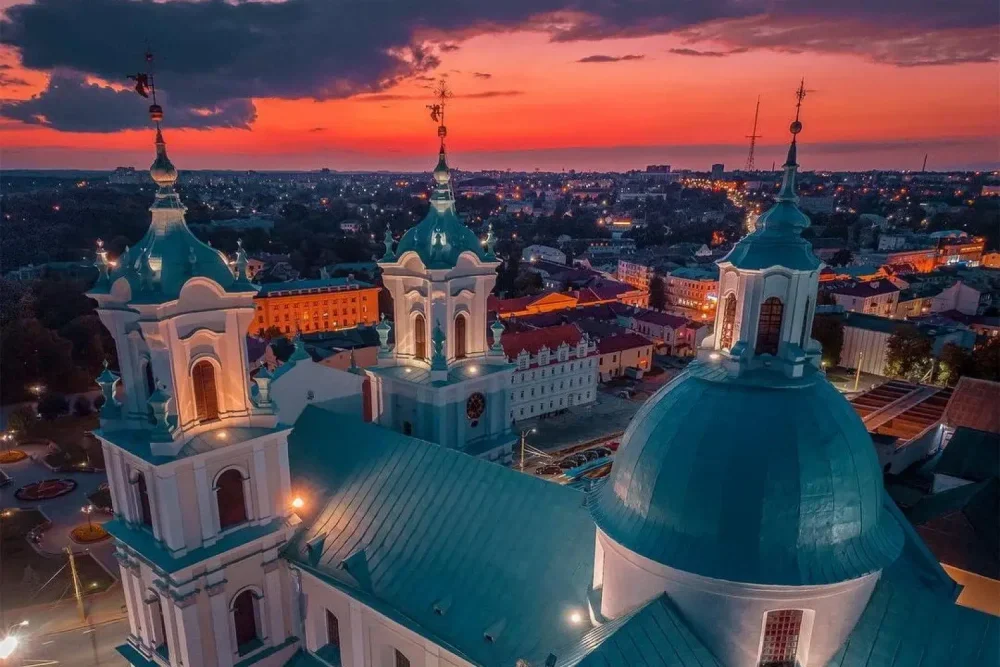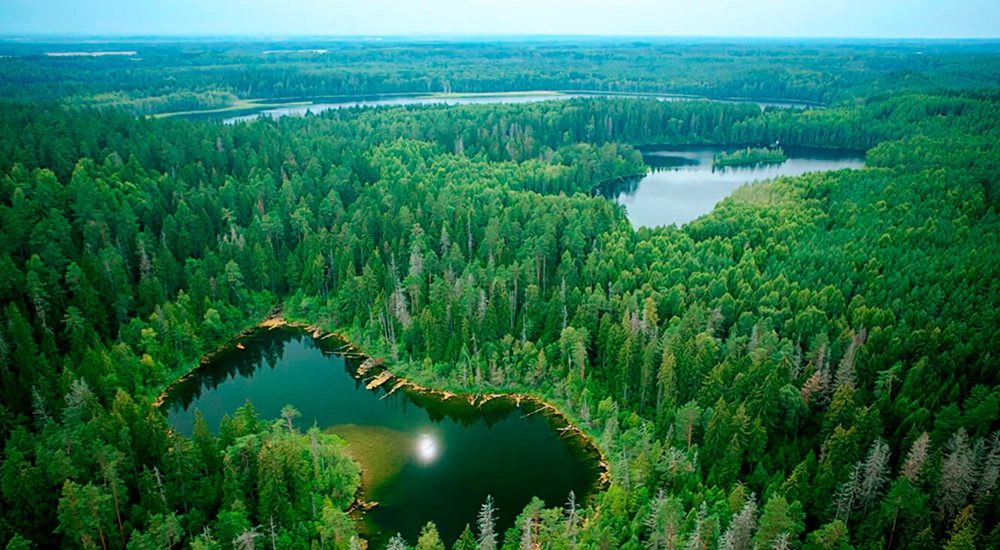Belarus is capable of surprising even the most experienced traveler with its originality and hospitality. If you are looking for new experiences and want to discover something truly special, this article is for you. We will name the top 10 reasons to visit Belarus, and you will understand that here you can expect not only delicious food and beautiful architecture but also many other discoveries. Get ready to be amazed!
1. Authentic Belarusian cuisine: one of the reasons to visit Belarus
Reasons to visit Belarus invariably include a gastronomic direction. The local cuisine demonstrates a rare combination of simplicity, caloric content, and regional traditions. The menu predominantly features dishes based on potatoes, meat, pickled vegetables, mushrooms, and dairy products.
Regional accents
In the Grodno region, they serve “babka” – baked mass of grated potatoes with cracklings and onions. In Polesie, restaurants offer “vereshchak” – a meat sauce with kvass and spices. In Brest, they serve dumplings with stewed duck, and in Vitebsk – draniki with mushroom sour cream, fried to a golden crust.
Prices and locations
The average check in a cafe is from 12 rubles (350 ₽), in a themed restaurant – 25-40 rubles. The best gastronomic spots in Minsk: “Kukhmistr”, “Vasilki”, “Litvinski Shlyakh”. Outside the capital, gastronomic tourism is developing at estates, eco-farms, and food festivals.
2. Architectural diversity: from Gothic to modern
Belarus’ landmarks encompass several architectural epochs. Local cities have preserved unique ensembles that were inaccessible for mass construction in the 20th century. Reasons to visit Belarus often come down to the desire to see the blend of Catholic churches, Orthodox temples, military castles, and pre-war European streets.
Must-see points:
- Nesvizh Castle (16th century) – an example of Renaissance architecture with interiors, a park, and a system of canals.
- Mir Castle – Gothic with elements of the Renaissance, listed as a UNESCO World Heritage Site.
- Grodno – one of the oldest cities in Eastern Europe, preserved the Franciscan church, the Old and New castles.
- Gomel – a palace and park ensemble with a colonnade and an observation tower, offering a panorama of the Sozh River.
3. Forests, reserves, and lakes – a paradise for ecotourism
Nature is one of the main reasons to visit Belarus. Almost 40% of the territory is covered by forests. The country has over 10,000 lakes, around 20 national parks, and protected areas.
Attractions:
- Belovezhskaya Pushcha – the largest relic forest in Europe, home to over 900 bison, with a nature museum and animal enclosures.
- Narochansky National Park – lakes, pine forests, ecological routes, sanatorium complexes.
- Berezinsky Biosphere Reserve – an area with abundant swamps, rivers, wild fauna, including lynx, otter, and black stork.
4. Health tourism and sanatoriums: a reason to visit Belarus for those who want to support their health
Recreation in Belarus is actively developing through a network of sanatoriums specializing in recovery, prevention, and rehabilitation. Reasons to visit the country include low prices and the availability of natural resources: mineral water, therapeutic mud, and coniferous air.
Centers:
- “Yunost” (Minsk region) – treatment of cardiovascular and respiratory systems.
- “Sosnovy Bor” (Gomel region) – detox and weight loss.
- “Naroch” – neurology, musculoskeletal system, climate therapy on the lake shore.
The average price for a 10-day package including accommodation, meals, and procedures is 500-1000 dollars.
5. Estates and agro-estates with rural charm
Reasons to visit Belarus also include immersing yourself in a peaceful rural atmosphere. The country has over 2,000 agro-estates offering accommodation, fishing, mushroom picking, master classes, and excursions.
What the estate offers:
- Traditional interior with a stove and clay dishes.
- Yard with a bathhouse, pond, bicycles, greenhouse.
- Homemade food prepared on-site.
- Accommodation options from 30 to 120 rubles per day.
Popular destinations: Vileyka, Smorgon, Lepel, Ivye districts.
6. History and museums
Visiting Belarus is worth it for the deep yet accessible historical environment. The country’s museums opt for a lively format: reconstructions, interactive exhibits, multisensory displays. Tourism in Belarus benefits from the combination of modest presentation and rich exhibits.
Interesting locations:
- Museum of the Great Patriotic War in Minsk – a 3-story exhibition, equipment, documents, dioramas.
- “Dudutki” – museum of folk crafts, blacksmith shop, pottery, cheese dairy.
- Miniature Museum “Country Mini” – reduced copies of major architectural objects.
7. Festivals and cultural events
The festival calendar is an important reason to visit Belarus. Local holidays incorporate historical, folkloric, and gastronomic themes. Guests are engaged in costumed processions, fairs, open-air concerts.
Event calendar:
- “Kupala Night on the Berezina” – July, songs, dances, torchlight procession.
- “City Day” in Minsk and Grodno – September, parades, street jazz, fireworks.
- “Taste of Belarus” – gastronomic weekends in estates with tastings and master classes.
8. Year-round active recreation
Reasons to visit Belarus are chosen by enthusiasts of physical activity. The country offers developed cycling routes, river rafting, ski trails, horseback riding, and fishing.
Leisure options:
- Rafting on the Viliya, Neman, Berezina rivers – rafting of 2-4 difficulty categories.
- Bike routes “Green Trail” (Vitebsk region), “Augustow Canal”.
- Ski resorts “Silichi”, “Logoisk” – trails up to 900 meters, rentals, snow parks.
9. Coziness of cities: cleanliness, order, safety
A trip to Belarus will be appreciated by fans of peaceful urbanism. The urban environment is pedestrian-oriented, public transport operates smoothly, and the level of safety is one of the highest in the region.
Examples of activities in cities:
- Walk in the Upper Town of Minsk – ensemble of churches, theaters, and restaurants.
- Visit to Brest Fortress at sunset – memorial complex with illumination.
- Evening in Gomel – musical fountains, embankment, parks.
10. Accessibility and ease of trip organization
The reasons to visit Belarus are often determined by logistics. Visa-free entry for citizens of over 80 countries, simple registration, stable prices, and a calm atmosphere – all this creates comfortable conditions for a vacation.
Practical details:
- Visa-free entry – up to 30 days through Minsk airport.
- Average ticket price Moscow-Minsk – from 4,500 ₽.
- Accommodation in hostels – from 12 BYN, in hotels – from 35 BYN.
- Internet, transport, payment – all accessible, contactless payment is available.
Conclusion
Belarus offers more than meets the eye. The deep contrast between urbanism and nature, eventfulness, gastronomy, and a warm atmosphere make the trip not just possible but mandatory for those seeking an affordable, interesting, and peaceful vacation. The reasons to visit Belarus create a comprehensive impression in which there are no secondary elements – each city, each dish, each route enhances the overall effect.
 en
en  ar
ar  de
de  es
es  fr
fr  nl
nl  ru
ru  hi
hi  it
it  pt
pt  el
el 



